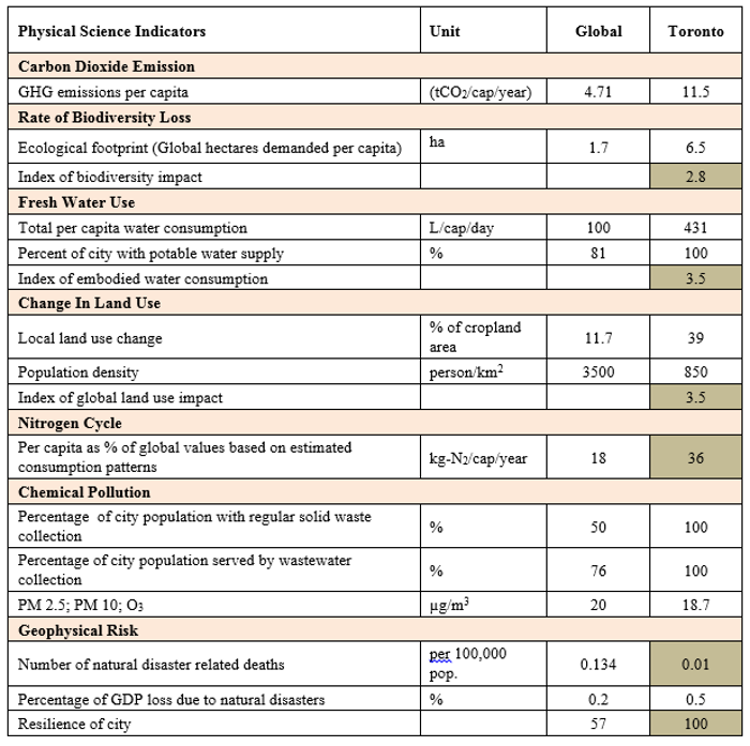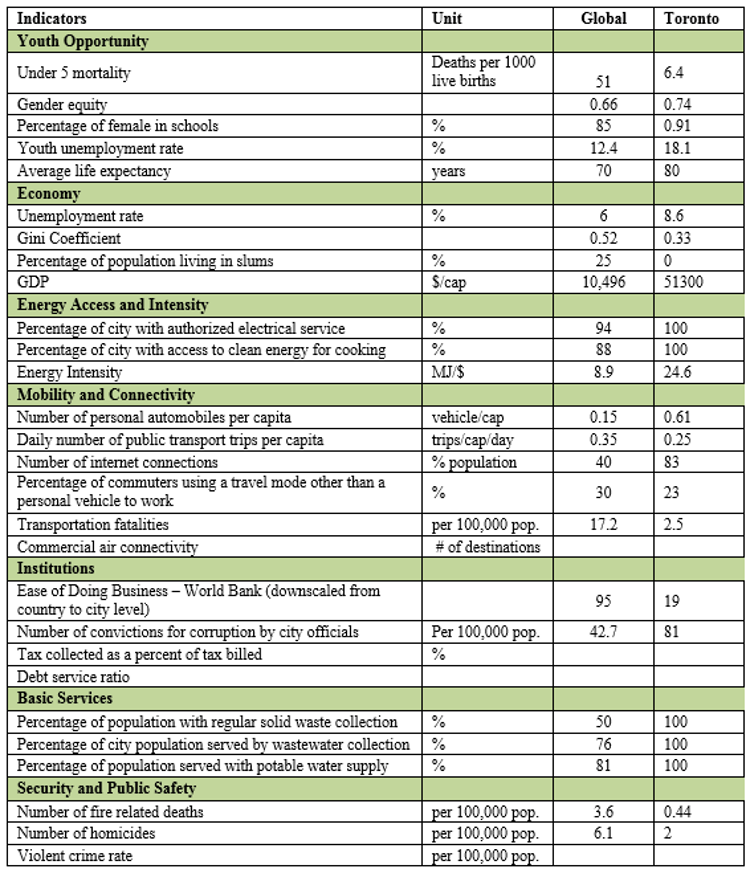Physical and Socioeconomic Indicators of Sustainability for Toronto
Following the planetary boundaries proposed by Rockstrom et al [1], and Dearing et al [2] and Raworth’s [3] suggestions on the need for defining physical and social boundaries, a suit of 14 indicators are presented, some with multiple inputs and some with that include estimated indices. The indicators are used to assess cities’ physical and socioeconomic limits compared to a global average. On a first run of the numbers, Toronto is selected as a case study, and its sustainability status is evaluated compared to the global limits (boundaries, target, or average). The indicators and measures, along with their units and the related numbers for the global average and the Greater Toronto Area (GTA) are given in Tables 1 and 2. Data are expected to be regularly updated; a global effort is needed to collect this information. Two key sources of data input and support are envisaged. The indices will be “crowd sourced” until more exact values can be obtained. The data will later be used in to depict the city’s sustainability status as in Figures 1 and 2.
Table 1: Physical science indicators of sustainability for Toronto

Table 2: Socioeconomic indicators of sustainability for Toronto

------------------------------------------------------------------------------------------------------------------------------
References
[1] Johan Rockstrom, Will Steffen, Kevin Noone, Asa Persson, F. Stuart Chapin, Eric F. Lambin, Timothy M. Lenton, Marten Scheffer, Carl Folke, Hans Joachim Schellnhuber, Bjorn Nykvist, Cynthia A. de Wit, Terry Hughes, Sander van der Leeuw, Henning Rodhe, Sverker Sorlin, Peter K. Snyder, Robert Costanza, Uno Svedin, Malin Falkenmark, Louise Karlberg, Robert W. Corell, Victoria J. Fabry, James Hansen, Brian Walker, Diana Liverman, Katherine Richardson, Paul Crutzen, and Jonathan A. Foley, 2009, "A Safe Operating Space for Humanity," Nature, 461, pp. 472-475.
[2] John A. Dearing, Rong Wang, Ke Zhang, James G. Dyke, Helmut Haberl, Md Sarwar Hossain, Peter G. Langdon, Timothy M. Lenton, Kate Raworth, Sally Brown, Jacob Carstensen, Megan J. Cole, Sarah E. Cornell, Terence P. Dawson, C. Patrick Doncaster, Felix Eigenbrod, Martina Flörke, Elizabeth Jeffers, Anson W. Mackay, Björn Nykvist, and Guy M. Poppy, 2014, "Safe and Just Operating Spaces for Regional Social-Ecological Systems," Global Environmental Change, 28, pp. 227-238.
[3] Kate Raworth, 2012, A Safe and Just Space for Humanity, Oxfam International, Oxford.